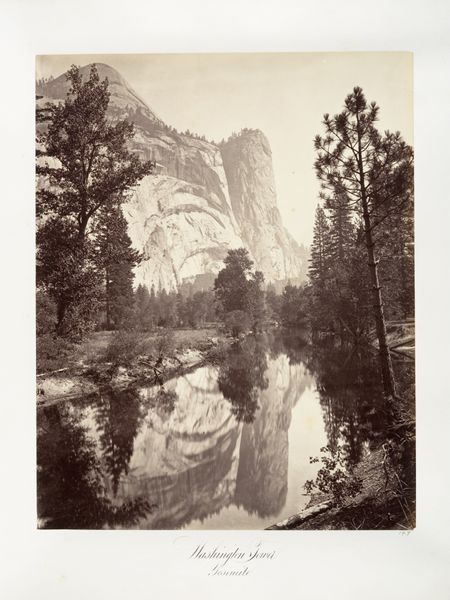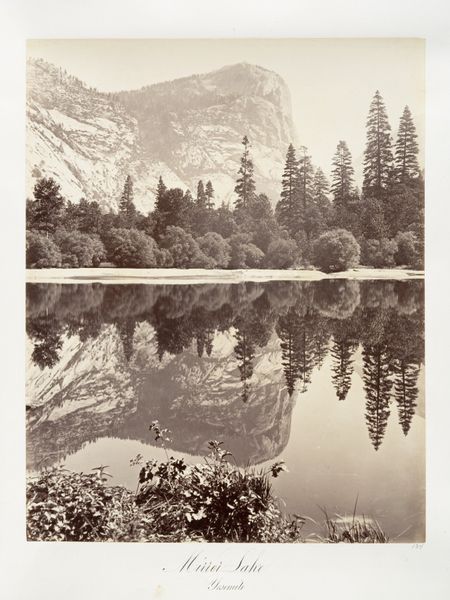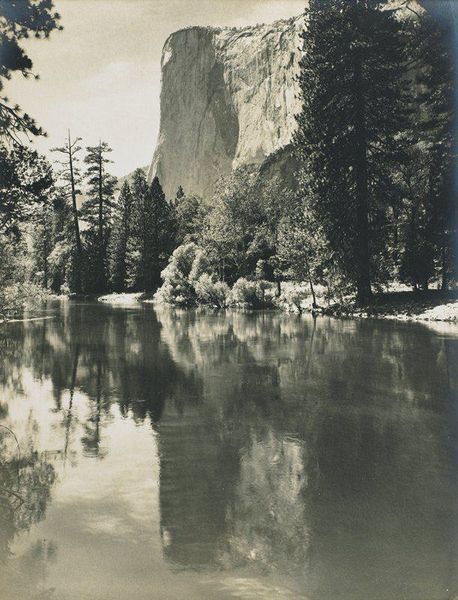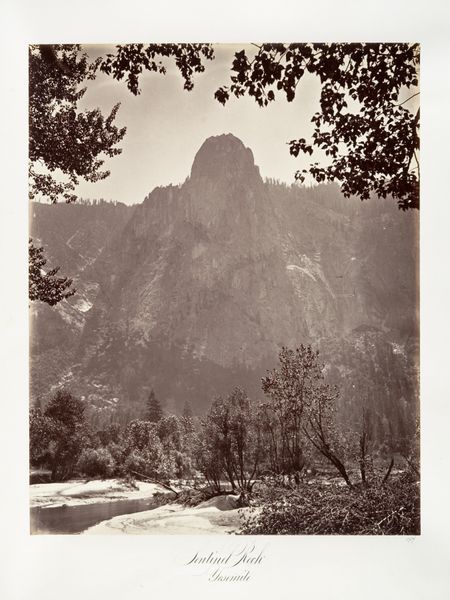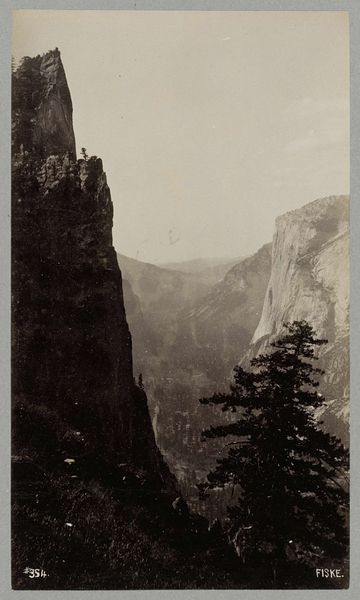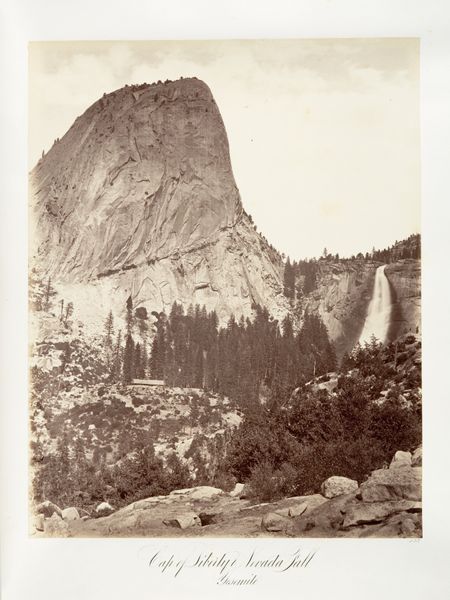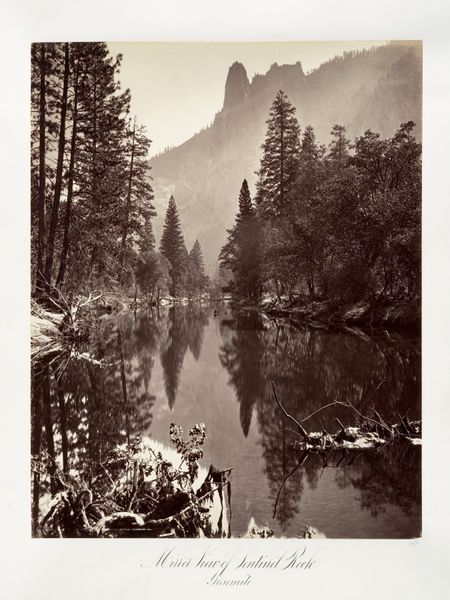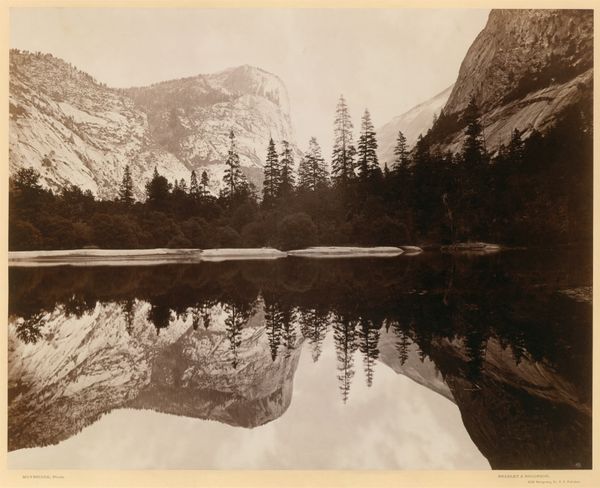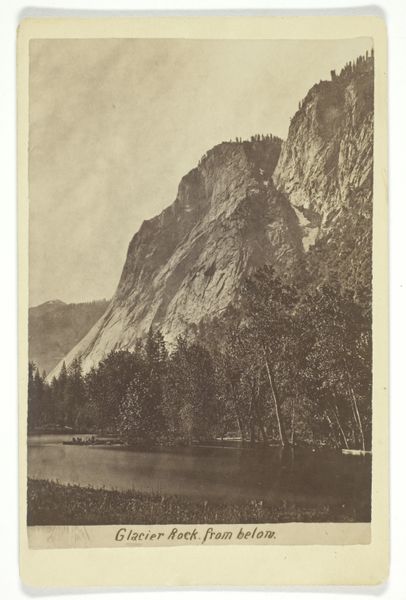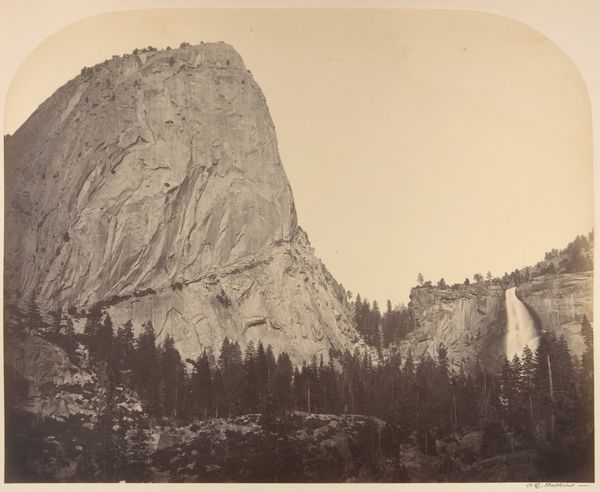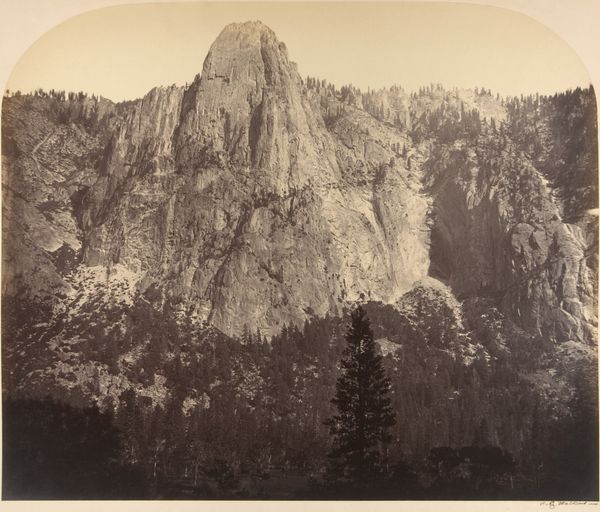
Mirror View of Cathedral Rocks, Yosemite 1870 - 1874
0:00
0:00
Copyright: Public Domain
Editor: We're looking at Carleton Watkins's "Mirror View of Cathedral Rocks, Yosemite," taken sometime between 1870 and 1874. It's an albumen print, so the tones are beautifully sepia. What strikes me most is how perfectly symmetrical the composition is. What do you see in this piece? Curator: The formal elements are meticulously arranged. Consider the relationship between the reflected image and the real. Watkins utilizes the horizontal axis as a dividing line, creating a compelling dialogue between the tangible and the intangible. Note how the reflections are almost a negative space mirroring geometric rock formations, softened by the water’s surface. Editor: So you're saying that the structure, the almost perfect mirroring effect, is the key element here? Curator: Precisely. The composition isn't merely representational. Look at the strategic placement of the trees, punctuating the scene and guiding the viewer's eye toward the focal point - the imposing Cathedral Rocks. Do you notice the interplay between the sharp, angular forms of the rocks and the soft, organic shapes of the surrounding foliage? Editor: I do see that now, and how it makes for a compelling contrast! It’s more than just a photograph of a landscape; it's a structured arrangement of shapes and lines. I had not initially appreciated how constructed this landscape is through its formal organization. Curator: And it is through recognizing the intentional design, the artistic manipulation of forms, that we begin to truly appreciate the photographer's artistic vision. I find this photograph successfully reduces nature into these perfect, geometric lines and shapes, making the mountain appear grand, spiritual, almost architectural. Editor: Absolutely! Seeing how Watkins framed the elements has offered an incredible perspective on composition and photographic artistry, not just documentation.
Comments
No comments
Be the first to comment and join the conversation on the ultimate creative platform.

